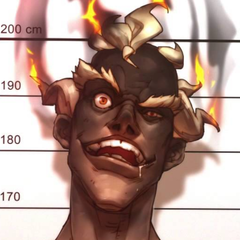-
Posts
1,229 -
Joined
-
Last visited
Awards
This user doesn't have any awards
Profile Information
-
Gender
Male
-
Location
Tennessee
System
-
CPU
Ryzen 5 5600x
-
Motherboard
Asus Prime x570-P
-
RAM
G.Skill Ripjaws V Series 16GB (2 x 8GB) DDR4-3000
-
GPU
NVIDIA GeForce RTX 3070
-
Case
Fractal Design Define S
-
Storage
HP EX950 1 TB M.2-2280 NVME Solid State Drive
-
PSU
Seasonic FOCUS Plus 750 Platinum SSR-750PX
-
Display(s)
Viotek GFT27DB 27.0" 2560x1440 144 Hz
-
Cooling
Noctua NH-U12S SE-AM4
-
Keyboard
Corsair Vengeance K70
-
Mouse
Logitech G403 Prodigy
- PCPartPicker URL
Recent Profile Visitors
2,011 profile views
johndms's Achievements
-
Every few months I like to backup my entire Documents folder in addition to my *ahem* legally downloaded media to an 8 TB drive on my home network. It'll basically sync the most recent version to the backup location skipping anything that's already there and hasn't been changed. The website may look a bit janky, but I've used a program called DSynchronize for several years. Might be worth looking at. http://dimio.altervista.org/eng/dsynchronize/dsynchronize.html
-
Looks nice but the fans being mounted with the stickers not displayed in the same direction causes my OCD to flare up.
-

Thoughts on second hand used M.2 NVME SSD?
johndms replied to Carson.C's topic in CPUs, Motherboards, and Memory
I would be extremely wary of used m.2 drives right now with the recent explosion of Chia crypto farmers. I won't get into the gory details but as you may be aware, SSDs have a limited number of write cycles calculated as Terabytes Written (TBW). Chia crypto farmers can exhaust the TBW of a single consumer SSD in a matter of weeks and you'll only know this by looking at the SMART information. Serious Chia farmers tend to use multiple m.2 drives simultaneously and I imagine once their drives start showing signs of failure, those less honorable farmers will try to pawn those drives off to unknowing individuals. -
I use Google Fi which can switch between Sprint, T-Mobile and U.S. Cellular depending on which is available or stronger.
-

Is 44 degrees normal for just watching youtube with a 3070?
johndms replied to SquiddyButler's topic in Graphics Cards
I'd say it all depends on ambient room temperature and case fans providing adequate cooling. I think it's even possible to set MSI Afterburner's custom fan curve to not even turn the fans on until the GPU hits a certain temperature (like 50c) to minimize noise, and 44c is definitely a safe temperature. That said, ideally, I think 30-35c would be normal for an idle 3070 with proper cooling with a 20c ambient temperature. -

Looking for a 1440p 144hz display for gaming for at or under $350
johndms replied to Dobby_is_free's topic in Displays
I can only offer my opinion on the monitor I purchased in June of this year, the Viotek GFT27DB. I absolutely love it and the price is incredible at around $259.99 at walmart.com. My only complaint is a minor one. When I press the power button to turn it off, it opens the OSD menu requiring me to press the same button again to actually turn it off. It's too bad rtings.com doesn't have a review of it, but I'll link one of the reviews that helped me with my decision. -
going through my emails, it seems $9.90 USD for 1yr
-
I was also a huge fan of SpeedFan until it stopped working each time I played PUBG. Something with their anti-cheat system. SpeedFan was the only program I could find that allowed me to adjust case fan speeds based on GPU and/or CPU temperature until I found Argus Monitor, it has the same capabilities. I've since paid for a 1 year license and will probably continue it.
-
In stock again at $2.48 USD
-
johndms changed their profile photo
-
I must disagree. I initially purchased a 7200rpm WD Blue and returned it for being too loud. Was sent a refurbished WD Blue that was also equally loud. Frustrated, I decided to swap brands. My 7200rpm 3TB Seagate Barracuda can be heard whirring away at idle from over 6 feet away. Now, it's possible my luck is just horrendous or I have overly sensitive hearing, but I've resorted to a network based storage with a cheap PC hidden in my closet to save what remaining sanity I have remaining. @SRRAE I even made a video to document the sound of the refurbished WD Blue. I know it's not the best practice to unplug a running HDD, but the whirring noise is simply too much for me and I wanted to show the comparison. Note the 2.5 inch drive running quietly beside it. Not sure if it's the size, or the 5400rpm making it quiet, but perhaps slower is better.
-
Another thing to keep in mind is the current price of BTC. As I'm sure you're aware, it crashed rather hard causing mining profits to be in the negative. Too expensive in electric costs to keep them going versus revenue. This has caused miners to sell all their cards at a loss (like I did), even perfectly good cards, just to get out quick. This is different from a card sold during peak mining times last Summer. Then, I would have wondered if someone was selling their broken cards for a low price. Now, personally, I wouldn't hesitate to buy a used mining card should my faithful EVGA card die. Though I would probably eyeball the RTX 2060 pretty hard first.
-
As a former miner myself (mined with two 1070s), I can honestly say most miners have been given a horrible reputation due largely to the influx in GPU prices we saw last Summer. I researched the hell out of mining before I got in to it. I joined Facebook groups and subscribed to YouTube channels dedicated to mining. I can tell you with confidence, very FEW miners abuse their cards. These are usually the ones who sit in their parents basement and don't pay for their own electric. The vast majority of miners are ALL about efficiency. The lowest watts used for the highest hash output. And rarely does anyone run their fans at 100% contrary to what you may have heard. It's not very good for profit if your card dies in a few months, it's all about longevity for maximum profits.. it's about keeping the cards as cool as possible so they'll last for many years. That said, consider this.. A GTX 1070 has a stock TDP of 150 watts. With MSI Afterburner the Power Limit can be pushed to 112% for a total of 190 watts in intense gaming sessions. However, when I mined Ethereum, I dialed my power limit down to 60%, which means my cards only consumed 90 watts from the wall at full load. My cards while gaming often reached 70c+ with aggressive fan curves, but stayed comfortably below 55c with a manual 60% fan speed while mining. Not only that, but mining is like putting your automobile on cruise control on the highway. One steady speed for long periods of time versus the constant stop and go traffic when compared to a gaming session. I hope that analogy made sense, it did in my head. Another thing to consider, check the warranty on whatever card you're thinking of purchasing. My second Nvidia GTX 1070 Founders Edition was still under warranty when I sold it.
-
I set my MSI Afterburner to not run my fans until the GPU reaches 60c, then bump them to 40% until 80c. I've never seen my 1070 above 65c, but if by some miracle they hit 80c, it then jumps to 100%. I've only used these settings recently, but it seems fine. I may tweak it come the summer months.
-
It should be as easy as right clicking, Documents, for example, and clicking Properties. Then click the Location tab and change the address. I'd back up the files first, just to be safe. But this is what I've done to reduce space taken on my SSD boot drive.
-
There is one thing to consider. I'm pretty sure the majority of GPU miners significantly dial back the Power Limit on their cards. I think it's a common misconception that miners run their cards as hard as they can possibly go, but that's simply not true. It's more about efficiency and low temps. How low can the Power Limit be set to achieve the highest ratio of hashrate per watts used while maintaining reasonable temps? When I gamed for hours on end, I craved the maximum FPS possible, thus I overclocked the hell out of my 1070, 112% TDP (190 watts). Now that I've begun mining instead of gaming, I find my personal preference is to set the limit to 82% (140 watts). My card's run in the high 50s to lower 60s. I guess it's a matter of opinion, really. Which card would you choose? One ran hard for a few hours each day, or one ran conservatively 24/7.










